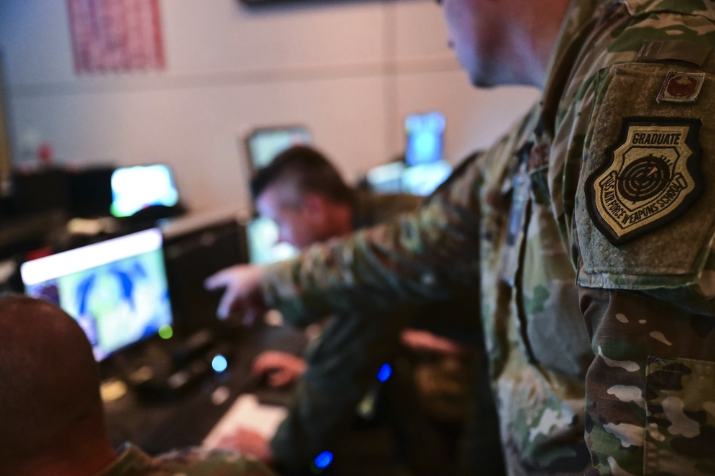How the Pentagon will advance its CJADC2 experiments — with allies — next year

The Pentagon’s quarterly-run Global Information Dominance Experiments (GIDE) are now leading up to “a worldwide, joint activity” where U.S. combatant commands will put next-generation command and control capabilities with multiple international military partners to the “ultimate” test, a senior official revealed Tuesday.
Early iterations of the GIDE series launched around 2020 — but the pace started really picking up in 2022, when Pentagon leadership pivoted to make it the military’s key mechanism for pushing forward technologies that enable a future warfighting construct known as Combined Joint All-Domain Command and Control, or CJADC2. The initiative is now led by the Chief Digital and Artificial Intelligence Office.
“We’ll have the next series coming up in the next couple of months, building up to a worldwide, joint activity where we’re going to have a carrier strike group that the Brits are going to take and cross three different U.S. COCOMs and four different international partners on the trip out, and then the three different COCOMs and international partners on the trip back,” CDAO Chief Information Officer Daniel Holtzman said Tuesday at an event hosted by Defense One.
“That is the ultimate example of [CJADC2] — how do we sail that fleet through this partner that wasn’t a partner yesterday, that’s now a partner who needs to connect to us and we don’t have a year-and-a-half to build a new [combat development system], and get it installed, and get it authorized, and put a U.S. person there? So, we are pushing the bounds,” he added.
The next big event in the series — dubbed GIDE 12 — is slated to unfold in the fall. More associated events will follow, and then that culminating engagement involving the carrier strike group is envisioned to fully come into fruition around the end of 2025.
“We have some planning cycles. What we are doing in the next GIDE is a series of experiments that all lead up to that activity. We’re connecting international partners — the U.K., Australia and others — in ways in the cloud that we prototyped that are pushing the bounds on certain things that get to [the] underlying data,” Holtzman said.
A CDAO spokesperson told DefenseScoop that the participating international partners and U.S. combatant commands are “still being coordinated.”
Holtzman is a longtime defense and cyber leader who has written software code for Navy nuclear weapons and what he told DefenseScoop is the first AI language ever built at MIT for research.
Right now, in his view, the Pentagon’s “biggest focus” with GIDE is about moving away from pursuing the “shiniest” new technologies — to instead demonstrating what real-world mission capability options actually are, and then accelerating deployments from there.
“The operator needs and the warfighter needs what they need. But I don’t go to an F-16 pilot and tell them how to fly the plane — and I don’t need an F-16 pilot to tell me how to build a cloud,” Holtzman told DefenseScoop. “So we’re using GIDE to [connect all the players and] deliver the capability we need now, because there’s skirmishes going on now, but not to lock us in, so we can take what [we learned and] put that into a requirement and into enterprise so we have that enterprise capability.”
The CIO added: “I would sum it by saying, traditionally, [my] view is the user will do whatever they need to do to get the new gun. And when they shoot the first six bullets, where’s the sustainment? Where’s the next set of bullets? Where’s the cleaning for the gun? Where’s the training range? Where’s all that stuff? We can put stuff out fast — and [GIDE is enabling] us to see that.”






